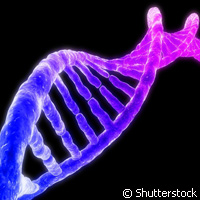DNA repair process and the cancer challenge
Cancer researchers have identified how recombination, a key DNA (deoxyribonucleic acid) repair process by which genetic material is broken down and joined to other genetic material, has the ability to self-correct and enable DNA to start anew. Published in the journal Nature, the results of the study could help improve our knowledge about basic cancer biology and lead to better and more effective cancer therapies. The study was funded in part the GENINTEG ('Controlling gene integration: a requisite for genome analysis and gene therapy') project, which clinched a EUR 1.85 million grant under the 'Life sciences, genomics and biotechnology for health' Thematic area of the EU's Sixth Framework Programme (FP6). Scientists from France, Switzerland and the United States showed how the ability to reverse itself makes recombination a robust process. Co-author Professor Wolf-Dietrich Heyer, one of the heads of Molecular Oncology at the University of California, Davis in the United States, points out that this process 'allows cancer cells to deal with DNA damage in different ways. This repair chemotherapy treatments work by inducing DNA damage'. Comparing this self-correcting capacity to driving in a modern city where it is easy to fix a turn made incorrectly, Professor Heyer asks: 'How much harder would it be to re-trace your path if you were in a medieval Italian city with only one-way streets?' Using yeast as a model system to shed light on how DNA repair works, the researchers plan to confirm their findings on human subjects as well. 'Whether in yeast or humans, the pathways that repair DNA are the same,' Professor Heyer says. Electron microscopy helped the team observe repair proteins in action on DNA strands. According to the researchers, a presynaptic filament called Rad51 materialised, regulating the balance between one enzyme (Rad55-Rad57) that favours recombination repair and another (Srs2) that inhibits recombination repair. Controlling the balance between the two enzymes enables Rad51 to start genetic repair - or the U-turn - as needed. 'It is a tug-of-war that has important implications for the cell,' says Professor Heyer, 'because if recombination occurs at the wrong time in the wrong place, the cell may die as a consequence.' Because the repair system has the ability to stop repair attempts that are bound to fail, the cell gets another chance. Cellular survival is improved despite the damage to its DNA. This is a major boon for research on cancer treatment. 'There are a lot of hints in the scientific literature suggesting that DNA repair contributes to resistance to treatments that are based on inducing DNA damage such as radiation or certain types of chemotherapy,' Professor Heyer says. 'The ability of cancer cells to withstand DNA damage directly affects treatment outcome, and understanding the fundamental mechanisms of the DNA repair systems will enable new approaches to overcome treatment resistance.' Next on the agenda is for the team to investigate the enzyme system in humans and determine whether the same principles are at work. 'If we can confirm that these types of mechanisms exist in human cells, then we will have an approach for making cancer cells more sensitive to DNA damage-inducing treatments,' he says.For more information, please visit:Nature:http://www.nature.com/
Countries
Switzerland, France, United States



